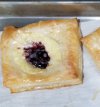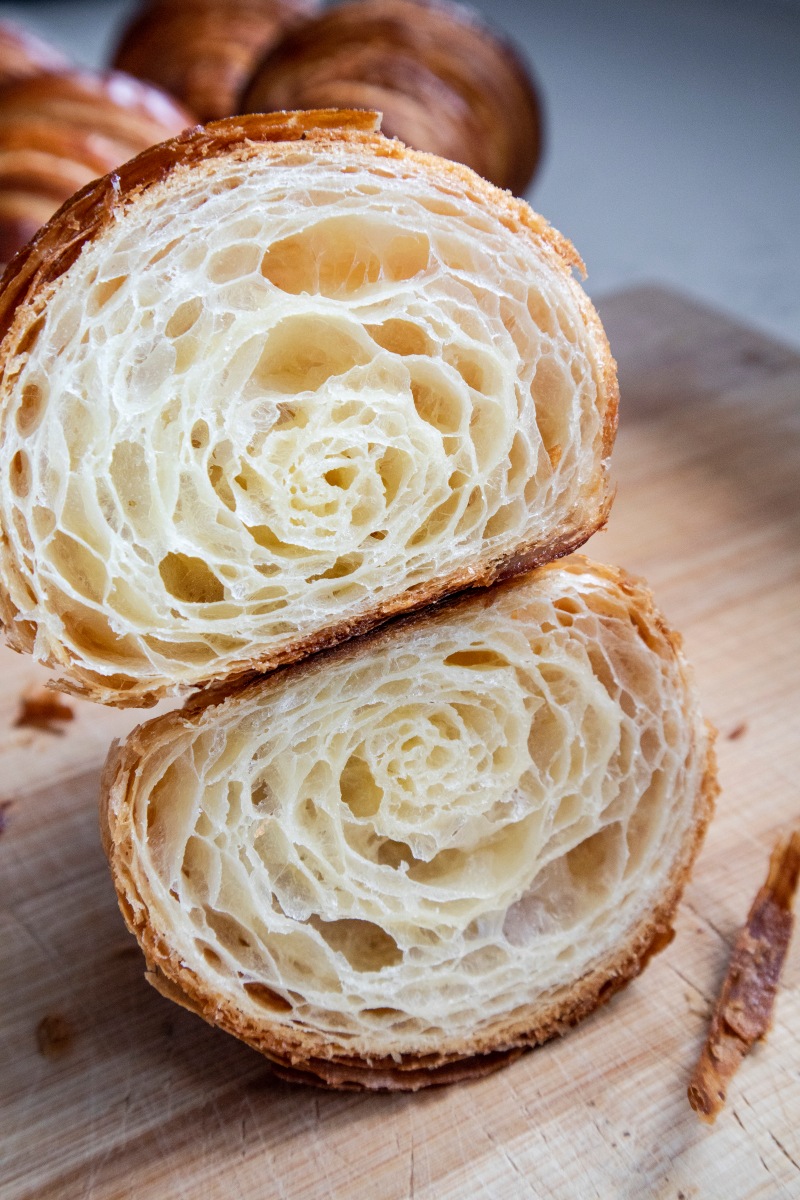Oh, one more thing... we did sprinkle a minimal amount of flour when working the dough (didn't do it the first time). I do believe it helped minimize handling and lessened warming the dough during folding and preparation. Also used a thin metal spatula, trying everything to keep the dough and butter from warming during the handling process.
This video is for croissant dough, but the only difference between a croissant dough and puff pastry is yeast. The she demonstrates excellent technique for hand lamination. Note the amount of flour she uses. It is still too much.
Proper way to flour work surface, take a pinch of flour between Forefinger and thumb. Yes, there is a pinch of flour between my fingers.
In as sideways motions, as is throwing a frisbee, scatter the flour across the counter. Do not try to smear the flour with your hands across the counter. Just let it be. Place the dough flour on the counter. If needed, lightly rub the dough over the flour.
This is all the flour that I scattered. Through the entire lamination process I may flour my surface twice. In class we were not even given a bowl of bench flour. If we wanted flour, the instructor literally walked over and threw a pinch on the bench, turned and walked away.
The fewer passes that you can make with the rolling pin the better. Tap the dough to elongated it before rolling. The roll. See photo below. BE VERY CAREFUL! Take care not to break the butter. By tapping out the dough it quickly shapes the dough into the size you need without excessive rolling; so avoids over heating. It helps to prevent stretching and overworking the dough and developing too much gluten. That technique is something to use whenever you roll any kind of dough.
you should see visible layers in laminated though after it is baked
This has been a post long time in the making… 1 year, 7 months and 1 week to be more precise. It was my new year resolution of 2018 and though we in 2019, I’m glad I was patient enough …

buttermilkpantry.wordpress.com



